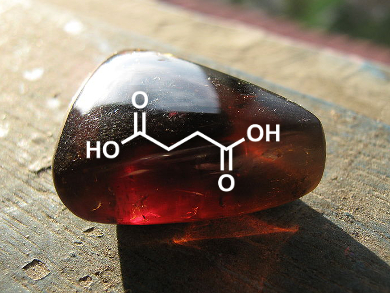Maxwell Simpson, an eminent organic chemist and the first to synthesize succinic acid, was born on March 15, 1815, in Beech Hill (county Armagh), Ireland, as the youngest of nine siblings. He studied arts and medicine at Trinity College, Dublin, Ireland, starting in 1832. He did, however, not get a medical degree and left the university with a B.A. in 1837.
On a trip to Paris, he attended a lecture by Jean-Baptiste Dumas, a French chemist best known for his work on the determination of relative atomic masses, which is said to have inspired him to study chemistry. He joined University College, London, UK, and worked there under the Scottish chemist Thomas Graham (of the eponymous law on gas effusion). He returned to Dublin in 1845, and was appointed lecturer for chemistry at Park Street Medical School, Dublin, in 1847.
In 1824, Justus Liebig had opened a laboratory for the practical instruction of chemistry students, pioneering a hands-on system of teaching in continental Europe. In order to get a first-hand view of this system, Simpson moved to Germany in 1851. It was a time of exciting breakthroughs in organic synthesis and theory. Upon his arrival, he worked with Hermann Kolbe, who first used the term “synthesis” in its chemical meaning, in Marburg for two years. In 1853, he joined Robert Bunsen in Heidelberg, Germany, where he developed an improved method for nitrogen analysis in organic compounds. After a short return to Ireland, Simpson moved to Paris, France, to work with Adolphe Wurtz on the theory of polyhydric alcohols (sugar alcohols, HOCH2‑(CHOH)n‑CH2OH). Upon his return to Dublin in 1860, he set up a small home laboratory, where he performed some of his most notable work, including the first synthesis of succinic acid (butanedioic acid) from ethylene bromide via the corresponding cyanide.
In 1872, Simpson was appointed professor of chemistry at Queen’s College, Cork, Ireland, where he remained until his retirement in 1891. Among other honors, he was Fellow of the Royal Society and the Chemical Society and was awarded honorary doctorates from the University of Dublin and the Queen’s University of Ireland. He died in London on February 26, 1902.
Maxwell Simpson is the answer to Guess the Chemist (39).
References
- Contributions of Maxwell Simpson (1815–1902) to Aliphatic Chemical Synthesis,
Desmond Reilly,
Chymia: Annual Studies in the History of Chemistry 1953, 4, 159–170. - The Dictionary of National Biography,
Robert James Rowlette,
Smith, Elder & Co., London, 1912.
Selected Publications
- XXVI. — On the Synthesis of Succinic and Pyrotartaric Acids,
Maxwell Simpson,
J. Chem. Soc. 1862, 15, 134–141.
DOI: 10.1039/JS8621500134 - Einwirkung der Säuren auf Glycol (in German),
Maxwell Simpson,
Liebigs Ann. 1859, 112, 146–150.
DOI: 10.1002/jlac.18591120203 - Ueber zwei neue Methoden zur Bestimmung des Stickstoffs in organischen und unorganischen Verbindungen (in German),
Maxwell Simpson,
Liebigs Ann. 1855, 95, 63–86.
DOI: 10.1002/jlac.18550950106



